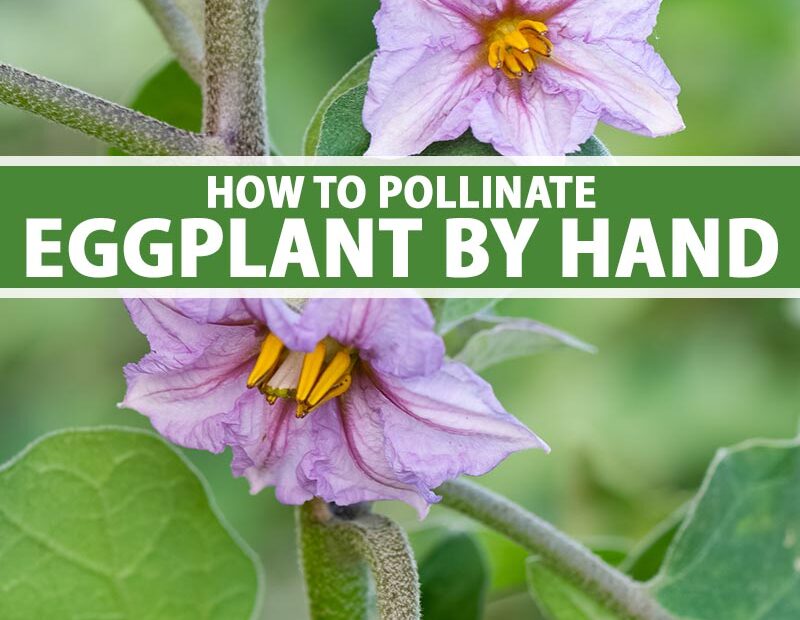Blooming amidst a symphony of vibrant hues, the eggplant flower captivates even the most indifferent observer. Casting its allure, it beckons pollinators from near and far, seeking companionship in this ephemeral dance of life. Yet, hidden beneath its velvety purple petals, lies a secret untold – the mystery of its pollination. As we delve into the enigmatic world of this delectable jewel of the nightshade family, let us unravel the signs that betray the silent brilliance of a truly pollinated eggplant flower. Prepare to unlock the secrets of nature’s sacred union, for the timeless art of pollination shall no longer hold secrets from you.
How to Identify a Pollinated Eggplant Flower
One of the most exciting moments for a gardener is when their eggplant flowers start to bloom. Each delicate blossom holds the promise of a delicious fruit to come. But how can you tell if these flowers have been successfully pollinated? Luckily, there are a few key indicators that can help you identify whether your eggplant flowers have been pollinated or not.
Firstly, take a closer look at the color of the flower. A pollinated eggplant flower will start to fade and wither, taking on a slightly droopy appearance compared to its vibrant, fresh counterparts. Additionally, you may notice the development of a small swelling at the base of the flower. This is a clear sign that pollination has taken place and a fruit is starting to form. Keep an eye out for bees, butterflies, or other pollinators buzzing around your plants as well, as their presence is a good indication that the flowers have been successfully pollinated.
In order to ensure that your eggplant flowers are being properly pollinated, there are a few helpful features and tips to keep in mind:
| Feature/Tips | Description |
|---|---|
| Plant diversity | Encourage a diverse range of plants in your garden to attract a variety of pollinators. |
| Time of day | Most pollinators are most active during the early morning or late afternoon, so observe your garden during these times. |
| Provide water | Ensure there is a water source, such as a shallow dish or birdbath, nearby to attract pollinators. |
Remember, patience is key when it comes to the pollination process. It may take some time for the flowers to fully develop into mature fruits. By observing the color, appearance, and presence of swelling, coupled with creating an inviting environment for pollinators, you can confidently determine whether your eggplant flowers have been successfully pollinated or not. Happy gardening!

The Significance of Pollination in Eggplant Production
As gardeners and cultivators of eggplants, understanding the significance of pollination is crucial in ensuring a bountiful harvest. Pollination is the transfer of pollen grains from the male reproductive organs to the female reproductive organs of a flower, leading to fertilization and the formation of seeds. In eggplant production, successful pollination directly impacts fruit development, size, and quality.
<p>So, how can we determine if an eggplant flower has been successfully pollinated? Well, here are a few telltale signs:</p>
<table>
<tr>
<th>Features</th>
<th>Tips</th>
</tr>
<tr>
<td><strong>Flower withers and falls off</strong></td>
<td>Once pollination occurs, the flower will begin to wither and eventually drop from the plant.</td>
</tr>
<tr>
<td><strong>Growth of the fruit</strong></td>
<td>Successful pollination triggers the development of the fruit, which will start to grow larger in size.</td>
</tr>
<tr>
<td><strong>Visible seed formation</strong></td>
<td>If you notice small, immature seeds within the eggplant, it is a clear sign that pollination has taken place.</td>
</tr>
</table>
<p>By keeping an eye out for these key indicators, you can determine whether your eggplant flower has been successfully pollinated. This knowledge will help you better understand the progress of your plants, enable you to address any issues, and ultimately increase the yield and quality of your eggplant harvest. So, observe your plants closely, appreciate the wonders of nature's pollination process, and enjoy the fruits of your labor!</p>
Insights into the Pollination Process of Eggplant Flowers
<div>
<h3>How to Know if Eggplant Flower is Pollinated</h3>
<p>Unlocking the mysteries of the pollination process in eggplant flowers can be both fascinating and rewarding. Wondering how you can tell if an eggplant flower has been successfully pollinated? Look no further! Here are some telltale signs to help you determine whether your eggplant flowers have received the gift of pollination.</p>
<br>
<h4>1. Observing the Stigma</h4>
<p>Take a closer look at the stigma, the sticky central part of the flower. Once pollination occurs, the stigma will appear moist and sticky, indicating that it has captured pollen grains. If the stigma remains dry and unused, chances are pollination has not taken place yet.</p>
<br>
<h4>2. Noticing the Petal Wilt</h4>
<p>After pollination, the petals of the flower might begin to wilt and fade. This is a positive sign that the flower has been pollinated successfully and is transitioning towards fruit development. Keep an eye on how the petals change over time to follow the progress of your eggplant plant.</p>
<br>
</div>
<div>
<table style="width:100%">
<tr>
<th>Features</th>
<th>Tips</th>
</tr>
<tr>
<td style="font-weight:bold">Sticky stigma</td>
<td>Pollinated flowers will have a moist and sticky stigma, indicating the capture of pollen grains.</td>
</tr>
<tr>
<td style="font-weight:bold">Wilted petals</td>
<td>Successful pollination can be confirmed by the wilting and fading of flower petals.</td>
</tr>
<tr>
<td style="font-weight:bold">Bee and insect activity</td>
<td>Monitor the frequency of bee and insect visits to your eggplant flowers, as they are crucial for pollination.</td>
</tr>
</table>
</div>

